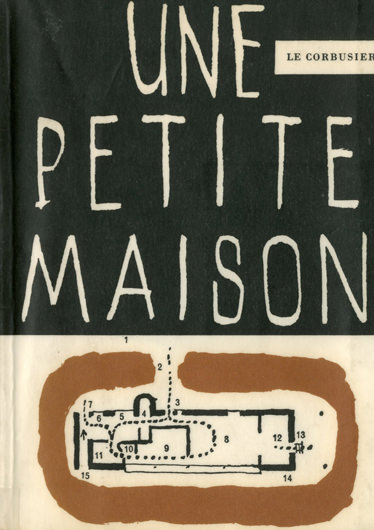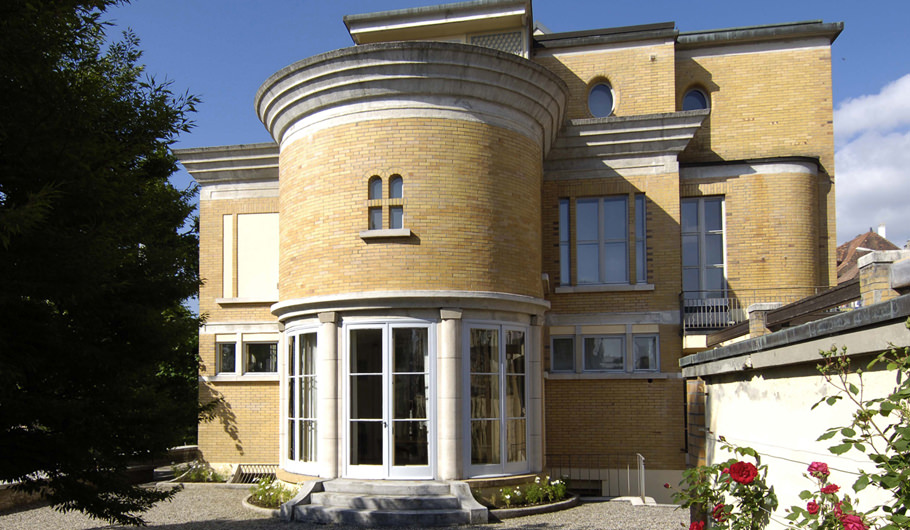Le Corbusier’s influence in Switzerland was considerable but difficult to define, his complex relationship with his native country being a mixture of love, disappointment, rejection, expectation, misunderstanding or frustration. In 1937, when he was already 50 years old and recognized the world over, Le Corbusier wrote at the request of Sigfried Giedion, the historian and CIAM spokesman, a text entitled “My relations with Switzerland”. In the end Giedion found the text too negative, and it remained unpublished.
Le Corbusier settled permanently in France in 1917 after building in Switzerland six private homes and a cinema, and participating in the creation of a short-lived new department at the Art School in La Chaux-de-Fonds. Despite the quality of his buildings and the avant-gardism of two of them in particular, Villa Jeanneret-Perret and Villa Schwob, Le Corbusier’s reputation in Switzerland and in the rest of Europe remained low-key, if it existed at all. It was only once he had settled in Paris, and in 1920 changed his name to Le Corbusier, that Charles-Édouard Jeanneret was to build up his international reputation within only a few years. Recognition from his compatriots was slow to follow, as confirmed by the architect himself in a letter addressed to William Ritter in 1925: “If I am susceptible with regard to my native country, it is because it has never shown any confidence in me, because my friends there have tended to keep their distance, because the local paper has never published that decisive ‘a child of La Chaux- de-Fonds’ article which would (at last!) have given my parents such satisfation, all this while I was being heavily soft-soaped in the journals of both continents, everything needed to make a conceited ass burst with self-satisfaction”.
The work done in Switzerland in the 1920s and 1930s, and his unsuccessful participation in the League of Nations competition (1925) gave rise to incomprehension, if not conflict. The radicalism of his language, seen both in Switzerland and in other countries as “Bolshevist”, often aroused mistrust rather than support. Mistrust and even rejection of Le Corbusier were part of the broader context of the slow, difficult reception of modernity in Switzerland.Yet, despite a strong attachment to the picturesque image of Switzerland propagated by the Schweizer Heimatschutz (Swiss Heritage Society), Switzerland’s contribution to the emergence of the Modern Movement was not insignificant. Karl Moser (1860-1936) was one of its precursors, especially through his teaching at the Polytechnic in Zurich, where he trained a whole generation of young architects who were to find in Le Corbusier an essential point of reference. Among them, his son Werner Moser, the brothers Emil and Alfred Roth, Max Ernst Haefeli, Carl Hubacher and Rudolf Steiger joined together in 1930 to build the Neubühl model housing development in Zürich. This estate, inspired by the Weissenhofsiedlung in Stuttgart, where Alfred Roth worked in 1927 on behalf of the Le Corbusier studio, is widely regarded as marking the emergence of architectural modernity in Switzerland. Robert Maillart (1872-1940), the builder of many concrete bridges in a spirit of pure rationalist logic, as well as Max Bill (1908-1994), and Hannes Meyer (1889-1954), director of the Bauhaus from 1928 to 1930, were other pioneering figures of modern Swiss architecture.
The short-lived ABC magazine, published in Basel between 1924 and 1928, was another major source of theoretical underpinning for this movement and for Functionalism. And it was of course Switzerland that hosted the founding CIAM Congress meeting on Le Corbusier’s initiative at La Sarraz in 1928. Its first president from 1928 to 1930 was Karl Moser, and its spokesman the active and talented Swiss historian Sigfried Giedion.
The latter was in fact one of Le Corbusier’s discoverers and a propagator of his thought and his work, not only in Switzerland but also throughout the world, especially with the publication of Espace temps architecture, one of the most widely read books on architecture in the world. Switzerland also contributed greatly to the knowledge of Le Corbusier’s work through the publication of the series of the Complete Works, the first of the eight volumes being published in Zürich in 1929 by Girsberger editions and edited by Willy Boesiger, a colleague of Le Corbusier in 1940, and Oscar Stonorov. In 1938 Max Bill, already mentioned, edited the third volume covering the period from 1934 to 1938.
Le Corbusier’s work was furthermore widely and lastingly circulated by some thirty-five co-workers from Switzerland who worked in the studio on rue de Sèvres in Paris from 1924 to 1954. As well as Roth and Boesiger, already mentioned, these included Pierre André Emery (1924-1926), Denis Honegger (1926), Albert Frey (1929), Otto Senn (1931), Oscar Burri (1939) and André Studer (1954).
While recognition of Le Corbusier’s work largely came to the Swiss architectural world in the inter-war period, his impact, much as that of the Modern Movement as a whole, remained limited in terms of production, there being much Swiss opposition – albeit on aesthetically questionable pretexts – to the urbanization of the large cities and the expansion of socialism and social conflict (12). The influence of Le Corbusier is perceptible in certain buildings by two former co-workers in the Rue de Sevres: Hans Brechbühler (School of Arts and Crafts of the city of Bern, 1937-1939) and Denis Honegger, and also in the work of Jacques Favarger (1889-1967), who executed several administrative buildings and villas in Lausanne, implementing a modern vocabulary clearly inspired by Le Corbusier.
As in other European countries and indeed the rest of the world, this situation changed fundamentally after the Second World War, with the triumph of the ideas of the Modern Movement and in the forefront Le Corbusier’s contribution.
This change of outlook in the post-war period was particularly illustrated by the work of Denis Honegger and Jean-Marc Lamunière, who sought to combine the Corbusian legacy with that of Louis Kahn. Several of the most prominent Swiss agencies of the 1950s and 1960s based their work on Le Corbusier’s legacy, adopting for example established Brutalist concepts. The architects’ collective known as Atelier 5, active in Switzerland and Germany since 1959, is among the most representative of this new modern architecture. It has borrowed Le Corbusier’s béton brut Brutalist aesthetic and also developed certain Corbusian typologies such as terraced construction, derived from the “Roq” and “Rob” models. An example is Siedlung Halen in Herrenschwanden near Bern (1959-1961), one that was in turn to serve as a model for many other examples of terraced building, particularly adapted to the mountainous Swiss terrain. Architects like Stucky and Meuli, C. Paillard, Peter Leeman and Scherer, or Strickler and Weber continued in this direction. Flora Ruchat-Roncati (1937), as well as Georges Brera and Paul Waltenspuhl (1919 and 1917), were also close to this Corbusian Brutalist vein.
Le Corbusier’s influence was not limited to the work of these architects already won over to the modern cause. It even played a role in the emergence of new directions in Swiss architecture such as the “Ticino School”, despite its special relationship with the geography of place. It also appears in the work of major architects like Mario Botta, who acknowledges Kahn and Le Corbusier as his two mentors.
Since the 1980s, Swiss architecture has gained international recognition through the work of several first-class agencies, particularly those of Diener & Diener and Herzog and de Meuron. This is not to suggest any direct derivation between them and Le Corbusier, simply to note that he helped to bring about a profound change in the Swiss approach to architecture and to open it up towards the international style.
Finally, in the wake of Sigfried Giedion, Switzerland today has some of the most outstanding historians of Le Corbusier’s work. Specialists such as Stanislaus von Moos, Arthur Rüegg or Bruno Reichlin have brought knowledge of the work of Le Corbusier and its impact in Switzerland and throughout the world to their highest level.
[1] Lettre à William Ritter, le 24/02/1925.
[2] Stéphanie Pallini, Entre tradition et modernisme, Ed. Benteli Verlag.



